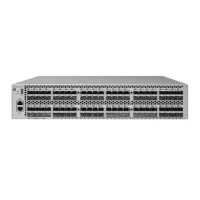FILEMODE, the LISTONLY option for VOLUMEMODE BACKUP does not list the files that were
on the disk when the backup was performed.
• For examples, see Viewing the Contents of a Tape (page 159).
MAP NAMES
The MAP NAMES option can be used for:
• Renaming files as they are restored
• Restoring files to a new volume or node within the network where they were backed up
• Restoring files to a different network from the one where they were backed up
MAP NAME[S] ( old-fileset-list TO new-fileset-list
[ , old-fileset-list TO new-fileset-list ] ... )
old-fileset-list
identifies the files on the backup tape.
new-fileset-list
specifies new names or destinations to be used in the RESTORE process.
Both old-fileset-list and new-fileset-list have the following format:
fileset
( fileset [ , fileset ] ... )
Guidelines
For more information on the MAP NAMES option, see Restoring Using Name Mapping (page 171).
For more information on moving SQL files, see Restoring SQL Files (page 166).
• If you specify the MAP NAMES option, you cannot specify the ALTFILE, PART, or VOL options.
• If you specify MAP NAMES or CATALOG[S], you cannot specify the PARTONLY option unless
you also specify the KEEP option. You might use these options together to move SQL partitions
between production and development systems when data volume exceeds practical tape set
limitations, or for migration operations. This does not necessitate any purges on the target
system.
CAUTION: It is critical that the CATALOGS and MAP NAMES mapping lists are complete even
when recovering an individual partition:
• If the CATALOGS option is specified, every associated catalog must be mapped.
• If the MAP NAMES option is specified, every partition must be mapped.
If the maps are incomplete or incorrect, severe catalog inconsistencies for the object will result.
These inconsistencies are quite difficult to repair, so make sure to avoid them.
• Verify that no other parts of any backed up SQL objects already exist. Because individual
SQL objects are implicitly included in a BACKUP qualified file set, RESTORE could accidentally
purge a piece of a SQL object while restoring another piece of that object. The KEEP option
does not prevent this kind of purge.
• To restore an SQL object to a different location, use MAP NAMES. To restore the files to their
original locations, do not use MAP NAMES in the command. If the location is in a different
system, make sure to specify both the old and the new system names.
138 RESTORE

